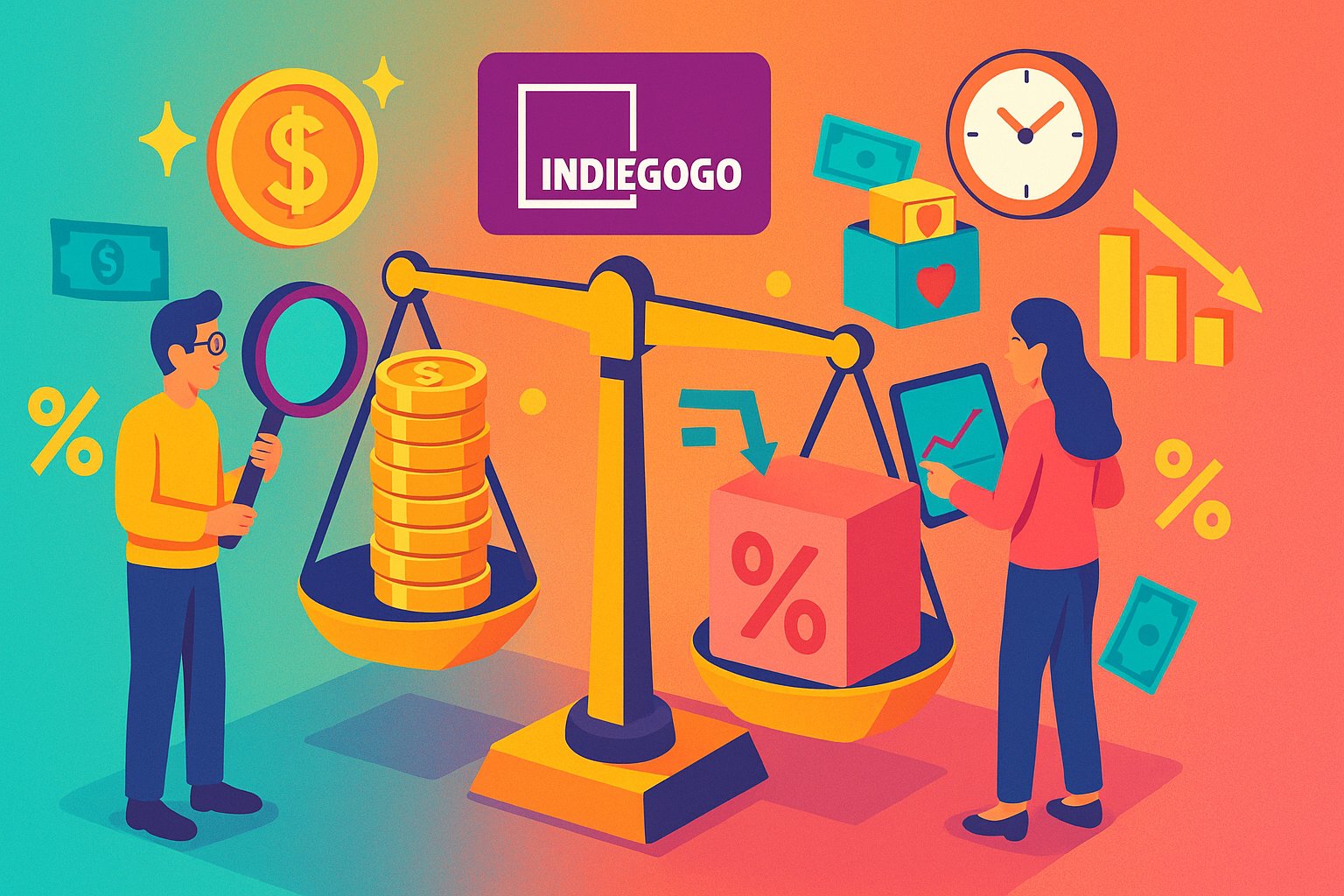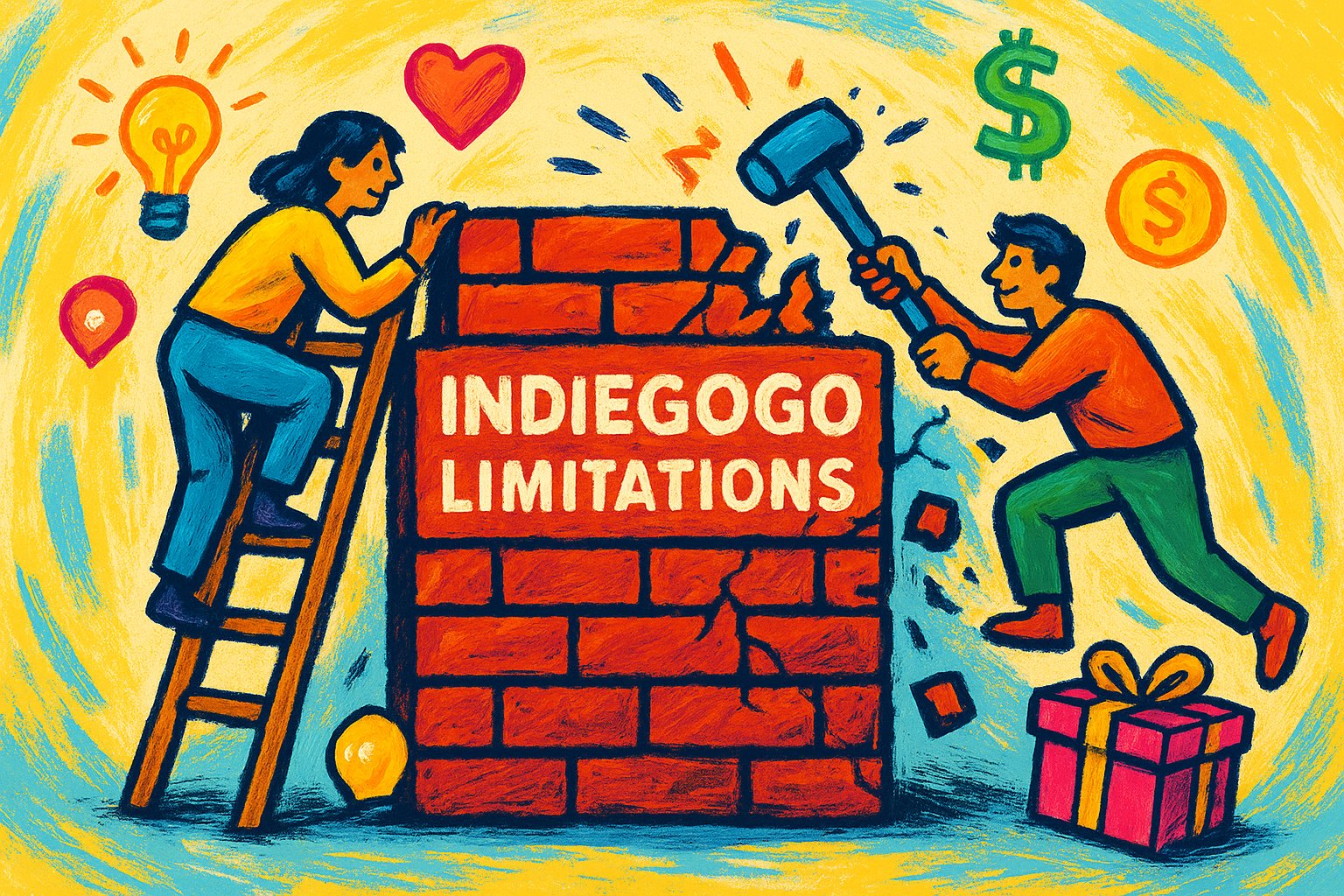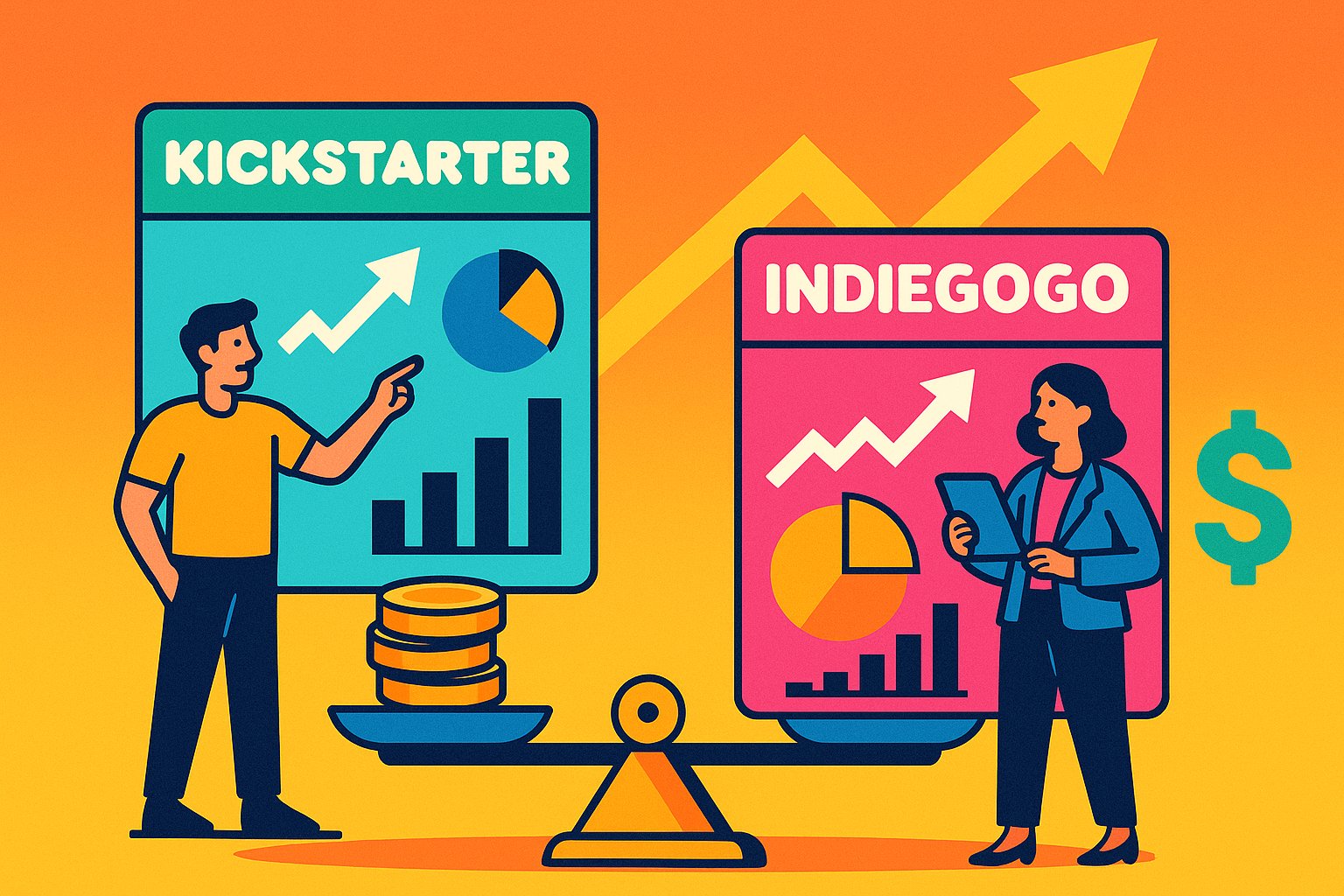Navigating Indiegogo’s Fee Landscape: Why Understanding Costs Is Crucial for Your Campaign
Launching a crowdfunding campaign on Indiegogo feels like unlocking a gateway to your dreams. You envision passionate backers rallying behind your innovative product or creative project, clicks transforming into pledges, and your goal bar soaring past 100%. Yet amidst this excitement lies a crucial factor that can make or break your fundraising aspirations: Indiegogo’s fee structure. While the platform provides immense reach, it also subtracts a percentage from every contribution, diluting the net amount that lands in your account. These deductions encompass platform fees, payment processing charges, and, for international campaigns, currency conversion costs. If you overlook these components in your budget planning, you may celebrate hitting your nominal funding target only to discover your actual take-home is significantly lower. Understanding how each fee layer functions—and how they interact with Indiegogo’s two main funding models (Fixed and Flexible Funding)—is the cornerstone of realistic goal-setting and strategic financial planning. Failure to account for platform fees can result in product manufacturing delays, strained cash flow, or compromised quality when executing on your promises. For creative professionals and hardware innovators alike, misjudging these costs can derail an otherwise stellar campaign. In this opening section, we’ll dissect the anatomy of Indiegogo’s fees, explain why early-stage forecasting is essential, and share practical tips to ensure the arithmetic behind your campaign aligns with the aspirations that drive it.
Unpacking Platform Fees: The Price of Access and Visibility
At the heart of Indiegogo’s business model lies the platform fee—a percentage deducted from the total funds raised in exchange for hosting, promotional tools, and community access. For most creators, this fee stands at 5% of all successfully funded pledges, regardless of whether you choose Fixed or Flexible Funding. This deduction covers platform maintenance, customer support infrastructure, and features like Indiegogo InDemand, which allows ongoing post-campaign sales. Beyond mere numerical subtraction, platform fees grant you visibility in Indiegogo’s discovery algorithms and enable features such as referral tracking, campaign analytics, and integrations with social media. If you opt for a Fixed Funding campaign, your project must meet or exceed its funding goal to receive any funds, and the platform fee applies only if you achieve that threshold. In contrast, Flexible Funding allows you to keep whatever you raise, even if you fall short of your goal, but the 5% fee still applies. Creators must factor this 5% into every pricing decision: pledge rewards, production budgets, and stretch-goal projections should all be built around net-to-creator figures, not gross totals. In practice, you might adjust your campaign goal upward by a margin that covers the platform fee—ensuring that after Indiegogo takes its share, you still secure the minimum capital necessary to deliver on your promises. By foregrounding this platform fee in your early planning, you mitigate the risk of shortfalls and align your campaign’s financial architecture with its creative vision.
Payment Processing and Transaction Charges: The Hidden Deductions
While the platform fee is the most visible cost creators encounter, payment processing and transaction charges often quietly chip away at campaign proceeds. Indiegogo partners with payment processors—such as Stripe—to facilitate credit card transactions, digital wallets, and other payment methods. In general, these processing fees amount to approximately 3% plus a fixed fee (commonly $0.30 per transaction), though the exact percentage can vary based on factors like backer location and payment method (e.g., credit cards versus Apple Pay). For instance, if a backer pledges $100, Indiegogo’s 5% platform fee reduces that to $95, but the payment processor may then deduct another $3.30 (3% of $110 including the fixed fee), leaving you with roughly $91.70. When multiplied by hundreds or thousands of pledges, these seemingly small deductions accumulate into significant sums. Moreover, campaigns attracting a large number of small pledges may face higher proportional processing costs than those that encourage fewer, larger pledges, because each transaction incurs its own fixed fee. Savvy creators combat this by incentivizing larger pledge tiers—bundling exclusive rewards or limited-edition perks to encourage backers to increase their contribution. Some campaigns also explicitly communicate processing fees when listing reward prices, fostering transparency and encouraging backers to choose higher tiers that offset the per-transaction costs. Ultimately, understanding how payment processing charges function—and how they scale with campaign volume—enables you to optimize reward structures, minimize friction, and preserve a larger share of campaign revenue.
Funding Model Selection: Fixed vs. Flexible Funding and Their Fee Implications
Indiegogo’s unique flexibility offers two distinct funding models, each with its own impact on fees and campaign dynamics. Fixed Funding acts as an all-or-nothing model: if you do not reach your funding goal by the campaign’s deadline, all pledges are automatically refunded and you incur no fees. This arrangement provides assurance to backers—they know their money will only be charged if the project secures full funding—thereby often driving higher engagement in the campaign’s early stages. However, if you do hit your goal, expect a standard 5% platform fee plus the payment processing charges discussed earlier. Conversely, Flexible Funding ensures that you keep all funds regardless of whether you meet your goal, but Indiegogo still applies the 5% platform fee and processing fees to every transaction. While this model guarantees you receive partial funding, it can also lead to misaligned expectations: if your campaign falls far short of its target, you may not generate enough revenue to cover manufacturing or development costs, even after fees. In essence, Fixed Funding encourages backers to help you cross the finish line quickly, reducing risk for both parties, while Flexible Funding serves as a safety net for creators who need any amount of capital to move forward. Weighing these fee structures against your project’s financial break-even point is critical. If your minimum viable project cost sits close to your goal, Fixed Funding may align more naturally with your needs; if incremental funding helps you validate market demand and cover baseline expenses, Flexible Funding offers a predictable floor.
Currency Conversion and International Considerations: Global Fee Variations
For campaigns that attract international backers or offer rewards denominated in multiple currencies, currency conversion fees and cross-border transaction charges add another layer of complexity. Indiegogo’s standard platform fee remains fixed at 5% across all currencies, but payment processors often levy additional surcharges for converting foreign pledges into your payout currency (typically U.S. dollars). These conversion costs can range from 1% to 4% of the transaction amount, depending on the processing partner and regional banking networks. For example, if a Japanese backer pledges ¥10,000, Indiegogo collects a 5% fee and processes the payment through its payment partner, which then converts ¥9,500 into USD—incurring, say, a 2% conversion fee—resulting in fewer dollars than the simple exchange rate might suggest. Furthermore, certain countries impose their own payment or remittance taxes, which funnel a portion of the pledge to local financial institutions before it reaches Indiegogo’s processors. Creators must also remain mindful of VAT (Value Added Tax) or GST (Goods and Services Tax) obligations when shipping physical rewards internationally. European Union backers, for example, often expect VAT-inclusive pricing or reimbursements. Neglecting these fees can lead to unexpected shortfalls in your final payout, forcing you to either delay reward fulfillment or absorb unexpected costs. To mitigate these risks, some creators price their reward tiers slightly higher for international shipping, build buffer margins into their budgets, or implement region-specific pledge levels that account for local fees. By mapping out these international considerations early on, you maintain financial clarity and prevent surprises when rewards cross borders.
Strategizing Reward Pricing: Aligning Pledge Levels with Net Proceeds
Reward pricing is not just about perceived value or stretch goals—it’s inherently tied to maximizing net proceeds after all fees. When setting your pledge tiers, start by calculating your baseline costs: manufacturing expenses, shipping, packaging, marketing, and Indiegogo’s combined fees. If a deluxe reward tier offers a product that costs $40 to produce and ship domestically, you might set its price at $80. However, deducting a 5% platform fee ($4) and roughly 3% payment processing ($2.40), your net becomes $73.60—leaving a mere $33.60 for profit and contingencies. A more nuanced approach involves constructing tiered bundles that encourage backers to select options that cover these hidden fees and still yield a healthy margin. For instance, bundling two units of your product with an exclusive accessory and positioning it at $150 ensures that even after fees, your net revenue covers production, shipping, and leaves ample room for R&D. Presenting early-bird pricing or limited-edition incentives for higher tiers can also motivate backers to pledge above the minimum, offsetting the smaller margins on lower-priced tiers where fixed processing fees bite more deeply. Transparency remains a crucial tactic: by clearly communicating why certain tiers are priced at specific points—because they incorporate shipping to remote regions or pre-pay manufacturing runs—backers appreciate the honest breakdown. When reward pricing directly correlates with net proceeds calculations, you maintain control over your campaign’s fiscal health and avoid the pitfall of delivering rewards at a financial loss.
Forecasting Net Proceeds: Building Realistic Financial Projections
Even the most creative pitch requires a robust financial roadmap to ensure sustainability. Forecasting net proceeds starts with modeling scenarios that account for various levels of campaign success, pledge mix, and geographic distribution. Use data from similar Indiegogo campaigns—particularly those within your niche—to estimate average pledge sizes and geographic splits. With a conservative estimate, assume a distribution where 60% of your support comes from domestic backers paying in USD, 20% from Eurozone backers paying in EUR, and 20% from rest-of-world transactions. Incorporate platform fees (5%), payment processing (approximately 3% plus fixed fees), and estimated currency conversion surcharges. Factor in anticipated shipping costs based on weight tiers and carrier rates—domestic versus international. Then, construct a best-case, base-case, and worst-case financial model: if you raise $100,000, your net might hover around $90,000 after fees; if you raise $50,000, net falls to roughly $45,000; if you only hit $25,000, net might dwindle to $22,000. These models inform key decisions such as minimum viable campaign goals, stretch-goal thresholds, and contingency funds. They also guide pre-launch marketing budgets: if your models reveal that doubling your email list pre-launch could boost funding by 20%, the cost to build that list becomes justifiable. By rigorously forecasting net proceeds, you set realistic expectations for yourself, your team, and your backers—ensuring that your campaign’s creative ambitions align seamlessly with its financial scaffolding.
Transparent Communication: Building Backer Trust Through Fee Disclosure
Backers appreciate honesty, and in the crowdfunding realm, transparent communication around fees strengthens trust and community engagement. While discussing platform fees and payment charges might seem counterintuitive—potentially unsettling backers who assume every dollar goes directly to creators—providing a succinct, clear explanation can foster goodwill. A short FAQ section on your campaign page that outlines “Why Our Reward Prices Are Set This Way” can demystify the journey from pledge to product. For instance, you might explain that a 5% Indiegogo fee covers campaign hosting, customer support, and analytics tools, while approximately 3% goes to payment processors handling secure transactions. Clarify how international pledges may incur additional conversion fees, and emphasize that these costs help ensure global backers can support the project seamlessly. Some creators choose to offer a small “international shipping add-on” that explicitly covers additional fees, thereby empowering backers to see the direct correlation between their pledges and fulfillment costs. This level of transparency not only prevents misunderstandings—such as disappointed backers assuming funds disappeared—but also elevates your campaign’s credibility. When backers understand the arithmetic behind reward pricing and fee deductions, they feel like informed partners in your journey rather than passive donors. This collaborative spirit often translates into increased word-of-mouth promotion, repeat support for future campaigns, and brand advocacy well beyond your initial launch.
Mitigating Fee Impact: Strategies for Maximizing Your Funding
Despite the inevitable deductions, several strategies can help minimize Indiegogo’s fee impact and maximize net proceeds. First, encourage higher average pledge sizes by structuring tiered bundles or limited-edition rewards that deliver perceived value well above the cost. Offering early-bird discounts or exclusive add-ons for the first X backers can boost initial traction and jump-start momentum, reducing reliance on smaller, less profitable pledges. Second, optimize payment methods: while most backers will pay via credit card, incentivize digital wallet options—such as Apple Pay or Google Pay—by highlighting their streamlined checkout experience; these methods sometimes incur lower processing fees. Third, leverage local fulfillment centers or print-on-demand services in key regions to reduce shipping costs and shrink the geographic cost differential. By forecasting which regions will generate the most pledges—through pre-launch surveys and early referral analytics—you can strategically set up localized shipping hubs, thereby avoiding steep international shipping and handling surcharges. Fourth, cultivate a segmented marketing approach: if your campaign attracts a larger share of European backers, consider partnering with region-specific influencers or blogs to reduce the overall cost per acquisition, ensuring each new backer brings in more net revenue. Finally, build a contingency buffer into your campaign goal—aim for 10% to 20% above your minimum viable funding target—so that after fees, you still achieve the necessary capital to execute your project. By adopting a multifaceted approach that combines smart reward structuring, payment optimization, localized fulfillment, and targeted outreach, you can significantly reduce the drag of platform and processing fees on your final payout.
Planning for Long-Term Success: Beyond the Initial Campaign
Successful Indiegogo campaigns often serve as springboards for broader business development—whether that means transitioning to a direct-to-consumer website, securing wholesale partnerships, or launching follow-up products. In each of these post-campaign phases, the lessons learned from fee management prove invaluable. For example, understanding your average net proceeds per backer helps you calculate customer acquisition costs when launching digital marketing campaigns on platforms like Facebook or Google. The ability to predict average order values—based on reward tier performance—guides pricing strategies when opening an online store. Moreover, familiarity with international shipping costs and currency conversion dynamics informs decisions on entering new markets or negotiating contracts with global distributors. As you expand your enterprise beyond crowdfunding, the ethos of transparency that you cultivated—explaining fees and costs to backers—translates seamlessly into customer communications. Whether you’re writing email newsletters, drafting press releases, or negotiating with retail buyers, clear articulation of cost structures and value propositions builds trust and credibility. By embedding fee-awareness into your long-term business playbook, you lay the groundwork for sustainable growth, ensuring your venture continues to thrive long after your Indiegogo campaign has concluded.
Embracing Financial Clarity for Crowdfunding Success
Ultimately, the degree to which Indiegogo’s fees impact your fundraising goals hinges on your ability to plan meticulously, communicate transparently, and adapt strategically. Recognizing that platform fees and payment processing charges are not obstacles but rather essential components of the crowdfunding ecosystem empowers you to set realistic goals, structure rewards judiciously, and forecast net proceeds with confidence. When you ground your creative vision in a robust financial framework—factoring in fixed and flexible funding implications, currency conversion challenges, and shipping complexities—you eliminate unpleasant surprises and foster a buoyant backer community that understands and supports your journey. Beyond the immediate campaign, these lessons ripple outward, informing marketing strategies, international expansion plans, and direct-to-consumer operations. By embracing financial clarity and embedding fee management into every decision, you transform your Indiegogo endeavor from a singular project into a replicable, scalable roadmap for entrepreneurial success.




